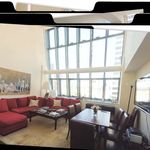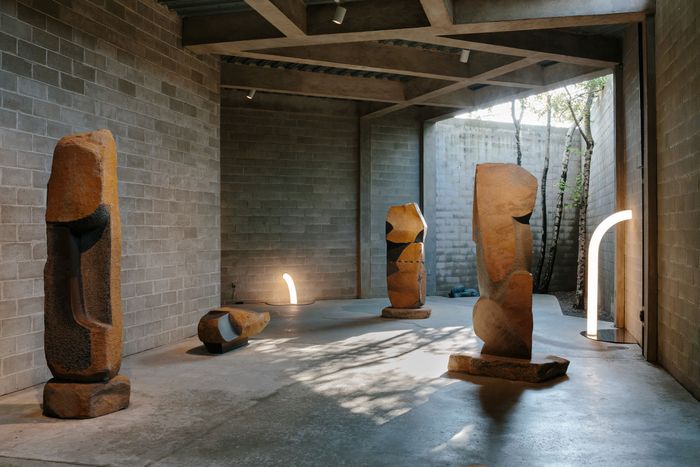
Most of the time, the Noguchi Museum’s sculpture garden and indoor-outdoor gallery stay the same aside from the changing seasons, but now there are a few temporary additions: chiseled opalescent-resin orbs that glow next to Isamu Noguchi’s pockmarked granite Practice Rocks in Placement, snaking tube lights that riff on the silhouette of his polished marble arches, and a ten-foot-tall inflatable sculpture that provides an airy contrast to Noguchi’s curved basalt monoliths. They’re part of “Hard, Soft, and All Lit Up With Nowhere to Go,” an exhibition by the design studio Objects of Common Interest that is in conversation with Noguchi’s work.
Eleni Petaloti and Leonidas Trampoukis, the studio’s founders, have visited the Noguchi Museum a few times a year since their time as architecture students at Columbia. Even though the installations stay mostly the same, walking through the museum always imparted to them some sort of creative revelation or new way of seeing. “It’s a very, very spiritual space,” Petaloti says. Now their pieces are instigating a similar experience alongside Noguchi’s sculptures, furniture, and lighting.
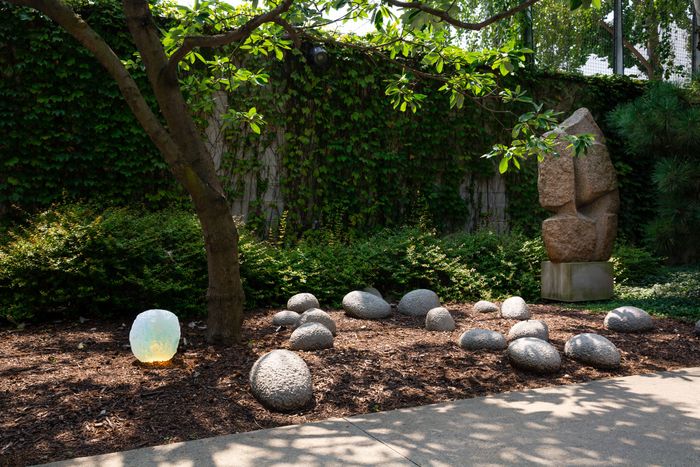
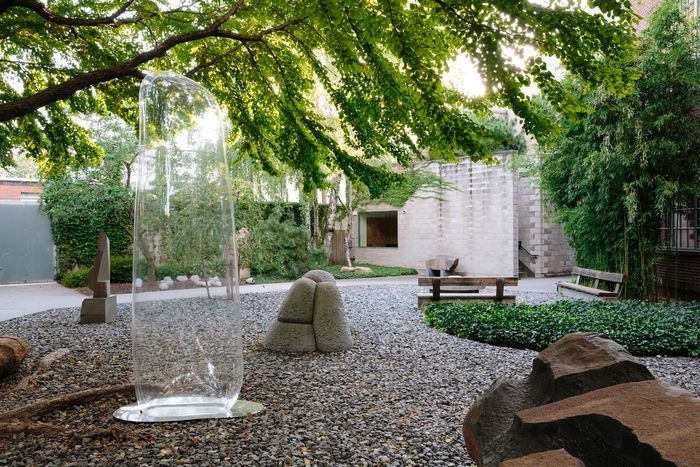
“Noguchi’s purpose for sculpture was to change the world for the better,” says Dakin Hart, the museum’s curator. “It’s extremely aspirational — and incredibly vague. But what’s more important than changing someone’s perspective?” He says Objects of Common Interest “are similar in that way. They make things that have the care and precision of Columbia-trained architects but with goals that are ethereal, nonspecific, and vaguely humanistic.”
There is no confusing Objects of Common Interest’s work with Noguchi’s, but they have a shared sensibility for toying with how our minds perceive material, weight, texture, and balance. “We wanted to go as light as possible, as transparent as possible, as invisible as possible,” Petaloti says. It’s a sensibility that is especially heightened in the two “living rooms” that Objects of Common Interest and Hart curated. The Noguchi living room is furnished with his Freeform sofa, Akari light sculptures, and stone sculptures. At the center of Objects of Common Interest’s room is the supple Tube Chair, a donut-shaped seat made from foam, so sitting in it feels like falling into an embrace. The piece is surrounded by side tables made of iridescent resin, waist-high inflatable-plastic floor lamps, and the almost blindingly bright glass Tube Lights that stretch from floor to ceiling. It’s a duel between the handmade and the machine-made — earthen materials versus artificial, gravitas versus luminescence.
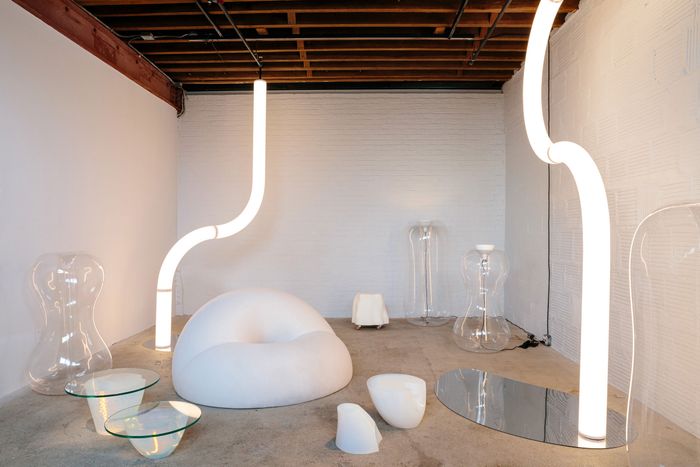
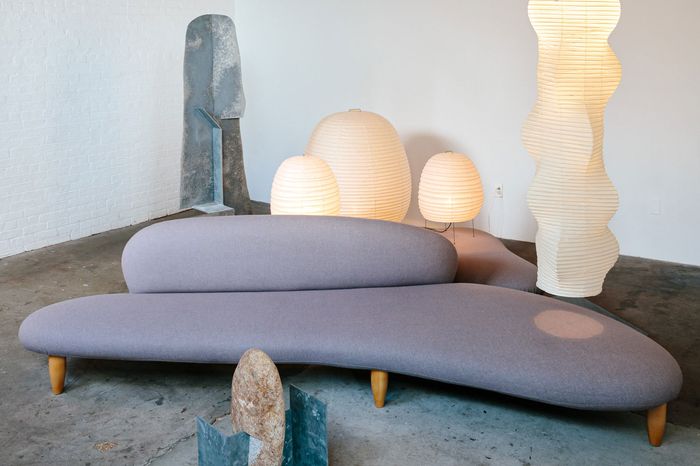
Hart envisioned the exhibition, on view through February 13, as a way to celebrate the museum’s reopening in March after the pandemic shut it down, and the emphasis on lightness and weightlessness feels a bit like a reprieve from the gravity of the world around us. “That psychic weight has not lifted,” Hart says. “Hopefully, the exhibition offers people an existential exhale.”



